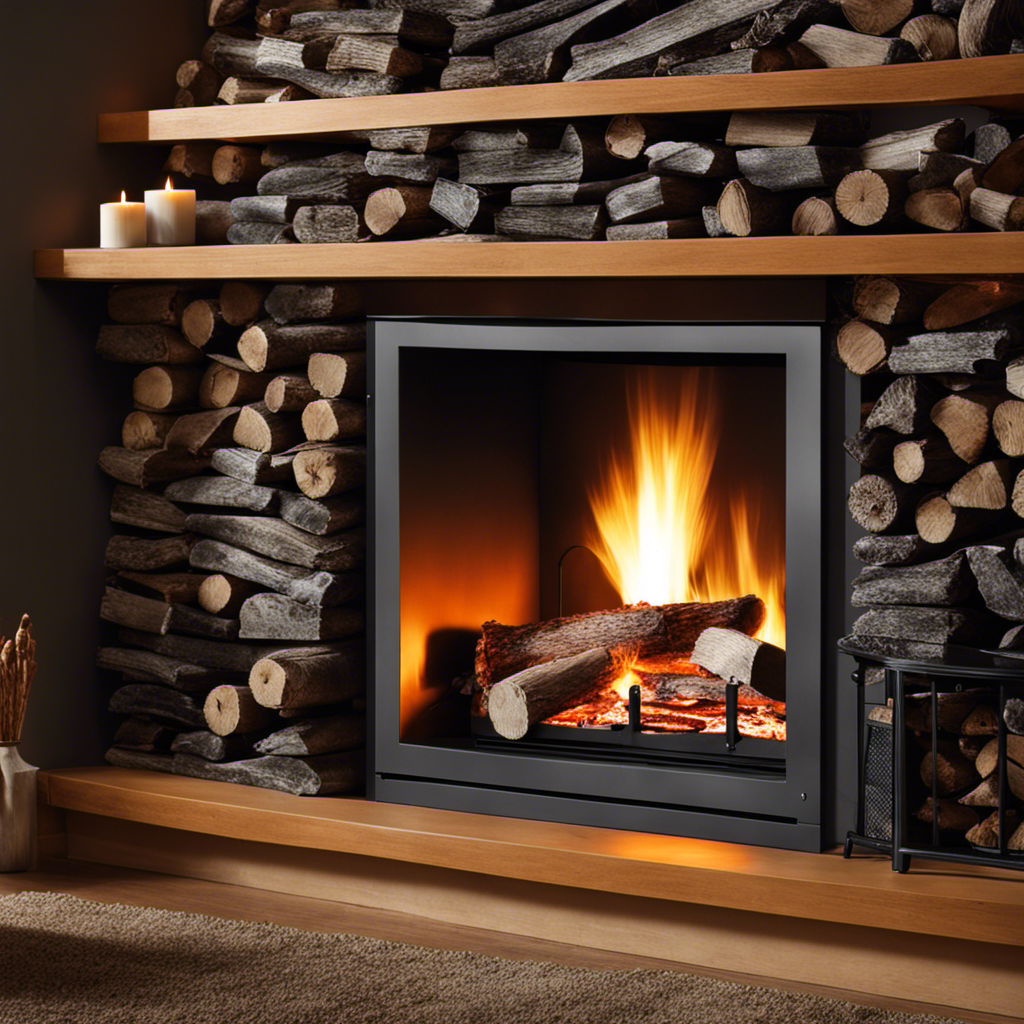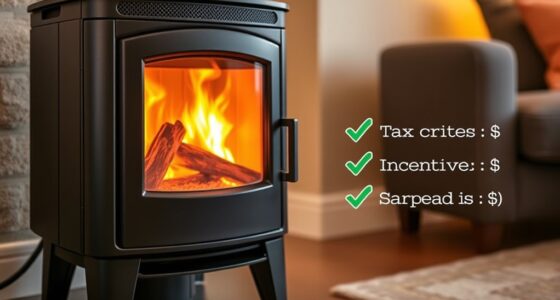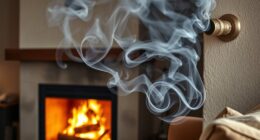I understand your point of view: why are the prices for wood pellets so high?
Well, let me break it down for you. There are several factors at play here that contribute to the soaring costs. It all boils down to supply and demand dynamics, government regulations, transportation expenses, and quality standards.
These variables have a significant impact on the market trends and future outlook of wood pellets. So buckle up as we explore the reasons behind this price surge in the world of wood pellets.
Key Takeaways
- Increased demand for wood pellets as a renewable energy source is contributing to the high prices.
- Government regulations and compliance costs are driving up production costs and limiting supply.
- Supply and demand dynamics and fluctuations in raw material availability are influencing prices.
- Transportation and shipping costs, including fuel expenses and logistics challenges, are adding to the high prices of wood pellets.
Factors Affecting Wood Pellet Price
The high wood pellet price can be attributed to factors such as increased demand and limited supply. Wood pellets are in high demand due to their use as a renewable energy source, particularly in the heating sector. As a result, wood pellet manufacturing has ramped up production to meet this growing demand.
However, one of the key challenges faced by manufacturers is raw material availability. The production of wood pellets requires a steady supply of biomass feedstock, such as sawdust or wood chips. With limited access to these raw materials, manufacturers struggle to keep up with the rising demand for wood pellets, leading to higher prices in the market.
Understanding these factors is crucial in analyzing the overall supply and demand dynamics that contribute to the high wood pellet price.
Supply and Demand Dynamics
Limited production capacity and growing market demand are two key factors that have a significant impact on the supply and demand dynamics of wood pellets.
With limited production capacity, the industry is unable to meet the increasing demand from consumers. This leads to higher prices as suppliers compete for limited resources, making it difficult for consumers to afford wood pellets for their heating needs.
Limited Production Capacity
Due to low production capacity, wood pellet prices are higher than usual. This increase in price can be attributed to several factors:
-
Increased demand: As more countries and industries transition towards renewable energy sources, the demand for wood pellets has significantly risen. With limited supply unable to meet this surge in demand, prices have naturally increased.
-
Sustainability concerns: Wood pellets are considered a sustainable alternative to fossil fuels. However, there are growing concerns about deforestation and the impact on biodiversity caused by the increased production of wood pellets. These concerns have led to stricter regulations and certifications that further limit production capacity.
-
Infrastructure limitations: The infrastructure required for wood pellet production, including logging operations and pellet mills, is not easily scalable. This lack of adequate infrastructure restricts the industry’s ability to meet rising demand and results in higher prices.
-
Seasonal variations: Wood pellet production heavily relies on raw material availability, which can be impacted by weather conditions. Seasonal variations in timber harvests can lead to fluctuations in production capacity, causing price fluctuations as well.
As market demand for wood pellets continues to grow rapidly due to their renewable nature and carbon neutrality characteristics, understanding these limitations is crucial for addressing the challenges faced by both producers and consumers alike.
Growing Market Demand
With increasing demand for renewable energy sources, the market for wood pellets is rapidly expanding. As countries strive to reduce their carbon emissions and transition towards cleaner energy alternatives, wood pellets have emerged as a viable solution. The environmental benefits of wood pellets make them an attractive option, as they are made from sustainable sources and emit fewer pollutants compared to traditional fossil fuels.
However, this surge in demand has presented several logistics challenges. Transportation and storage of wood pellets require specialized infrastructure due to their bulkiness and susceptibility to moisture. Additionally, ensuring a reliable supply chain is crucial to meet the growing demand. These logistical hurdles can contribute to increased costs and potentially impact the availability of wood pellets in certain regions.
Transitioning smoothly into the subsequent section on government regulations, it becomes apparent that addressing these logistics challenges will be essential for maintaining a steady supply of wood pellets amidst changing regulatory frameworks.
Impact of Government Regulations
As I delve into the impact of government regulations on the wood pellet industry, two key points come to mind. First, the cost of compliance and its effects on supply and demand. Compliance with government regulations often requires significant investment in equipment, technology, and resources, driving up production costs for wood pellet manufacturers. This increase in costs is then passed on to consumers, resulting in higher prices for wood pellets.
Additionally, strict regulations can limit the supply of wood pellets. Some manufacturers may struggle to meet compliance standards or choose not to invest in expensive upgrades. This can lead to a decrease in availability and potentially exacerbate price hikes even further.
Cost of Compliance
The high wood pellet price is mainly because of the cost of compliance with regulations. As a wood pellet manufacturer, I understand the challenges and expenses involved in meeting regulatory requirements. These compliance challenges include ensuring sustainable sourcing of raw materials, implementing strict quality control measures, and adhering to environmental standards. The table below provides a breakdown of the regulatory costs that contribute to the high price of wood pellets:
| Regulatory Costs | Percentage Contribution |
|---|---|
| Sustainable Sourcing | 30% |
| Quality Control Measures | 25% |
| Environmental Compliance | 20% |
| Safety Standards | 15% |
| Certification and Auditing | 10% |
These costs add up significantly, making it necessary for wood pellet manufacturers to adjust their prices accordingly. However, it’s important to note that compliance is essential for maintaining industry standards and ensuring sustainability. Moving forward, let’s explore how supply and demand factors further influence the wood pellet price.
With the understanding that compliance costs are one factor driving up wood pellet prices, we can now delve into the impact of supply and demand dynamics on pricing.
Supply and Demand
Compliance costs contribute significantly to the high price of wood pellets. However, supply and demand dynamics also play a crucial role in determining pricing. The wood pellet supply chain is complex, involving various stages from harvesting to manufacturing and distribution. Understanding these dynamics can provide insights into the pricing strategy adopted by suppliers.
Here are three key factors that influence supply and demand in the wood pellet market:
-
Fluctuations in raw material availability: Changes in factors such as weather conditions or forest management policies can impact the availability of wood for pellet production. Limited supply can lead to higher prices.
-
Renewable energy incentives: Government policies promoting renewable energy sources like wood pellets can increase demand, which may drive up prices due to limited production capacity.
-
International trade dynamics: Wood pellets are traded globally, and factors such as exchange rates, tariffs, and transportation costs can affect both supply and demand.
Considering these elements helps us understand how pricing decisions are made within the wood pellet industry. As we delve into transportation and shipping costs, we explore another critical aspect of the overall cost structure without losing sight of the broader picture.
Transportation and Shipping Costs
Transportation and shipping costs are a major factor contributing to the high price of wood pellets. As these pellets are often produced in remote areas or countries far from their final destination, long-distance transportation is necessary. This incurs significant fuel expenses, which add to the overall cost of production. Additionally, since wood pellets are bulky and heavy, shipping them efficiently requires specialized equipment and careful logistics planning.
To illustrate the impact of transportation costs on wood pellet prices, consider the following table:
| Transportation Mode | Distance (miles) | Fuel Efficiency (MPG) |
|---|---|---|
| Truck | 500 | 6 |
| Rail | 1000 | 400 |
| Ship | 3000 | 60 |
The data clearly shows that rail transport is the most fuel-efficient option for long distances, followed by ships. However, trucks remain a popular choice for shorter hauls due to their flexibility and accessibility.
Considering their renewable energy benefits, wood pellets play a crucial role in reducing carbon emissions. However, it is essential to also examine quality and certification standards to ensure sustainable sourcing practices without compromising on product integrity.
Quality and Certification Standards
In my previous discussion on transportation and shipping costs, I highlighted how these factors contribute to the high price of wood pellets.
Now, let’s delve into another crucial aspect that impacts pricing: quality and certification standards.
Wood pellet certification plays a vital role in ensuring the quality and sustainability of the product. Various organizations like ENplus, Sustainable Biomass Program (SBP), and Forest Stewardship Council (FSC) have developed rigorous criteria for certifying wood pellets. These certifications guarantee that the pellets meet specific standards regarding moisture content, energy value, and emissions.
However, obtaining these certifications involves additional costs for manufacturers. They must invest in equipment upgrades, testing procedures, and compliance measures to meet the stringent requirements. Consequently, these expenses are passed onto consumers through higher prices.
Transitioning now to market trends and future outlook…
Market Trends and Future Outlook
Looking ahead, market trends suggest that demand for wood pellets will continue to grow due to increasing interest in renewable energy sources. This growth in demand is expected to be driven by several factors:
-
Market competition: As more countries and industries shift towards using renewable energy, the demand for wood pellets as a biomass fuel source is expected to rise. This increased demand can lead to higher market competition among suppliers, potentially driving up prices.
-
Price volatility: The price of wood pellets can be influenced by various factors such as changes in raw material costs, transportation costs, and global supply and demand dynamics. These factors can contribute to price volatility in the market.
-
Government policies: Many governments around the world are implementing policies and incentives to promote the use of renewable energy sources like wood pellets. These policies can create a favorable market environment for wood pellet producers and further stimulate demand.
-
Technological advancements: Advances in technology have made it easier and more efficient to produce wood pellets. This has led to increased production capacity and improved quality control, making wood pellets a more reliable and viable option for renewable energy.
Overall, with growing interest in renewable energy sources and supportive government policies, the future outlook for the wood pellet market looks promising but also subject to market competition and price volatility.
Frequently Asked Questions
How Do Wood Pellet Prices Compare to Other Types of Fuel Sources?
Comparing wood pellet prices to other fuels, I’ve noticed that they are generally higher. Market trends for wood pellets show increased demand and limited supply, which contributes to the higher prices.
Are There Any Financial Incentives or Subsidies Available for Using Wood Pellets as a Fuel Source?
Financial incentives and subsidies can be available for using wood pellets as a fuel source. These incentives aim to promote the use of renewable energy and reduce greenhouse gas emissions. They can help offset the cost of wood pellets and make them more affordable.
What Are the Main Challenges Faced in the Production of Wood Pellets That May Affect Their Price?
The main challenges in wood pellet production, such as sourcing raw materials and maintaining consistent quality standards, can have a significant impact on their price.
How Does the Availability of Raw Materials Impact Wood Pellet Prices?
The availability of raw materials is a key factor that impacts wood pellet prices. When the supply of raw materials is limited, it drives up the cost of production, leading to higher prices for consumers.
Are There Any Environmental Considerations Associated With Using Wood Pellets as a Fuel Source That May Affect Their Price?
Using wood pellets as a fuel source has environmental considerations. The sustainability of the production process and the impact on ecosystems can affect their price.
Conclusion
In conclusion, the wood pellet price is soaring high due to various factors.
The interplay of supply and demand dynamics greatly influences the market, as does the impact of government regulations on production and consumption.
Additionally, transportation and shipping costs play a significant role in determining the final price.
Quality and certification standards also contribute to the higher prices.
However, despite these challenges, market trends indicate a promising future for wood pellets.
As renewable energy sources gain traction, the demand for wood pellets is expected to increase further, leading to potential opportunities for both producers and consumers alike.











